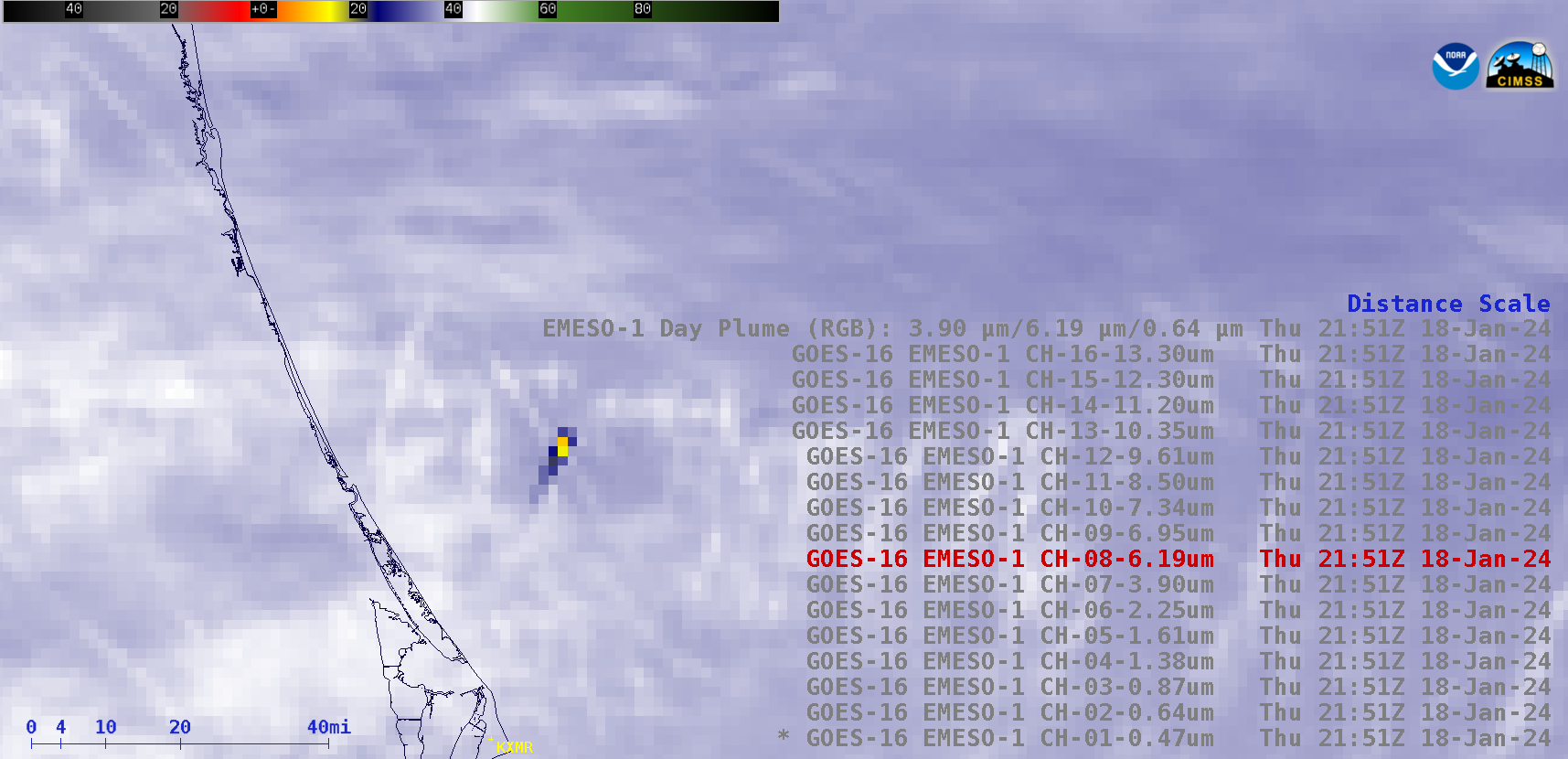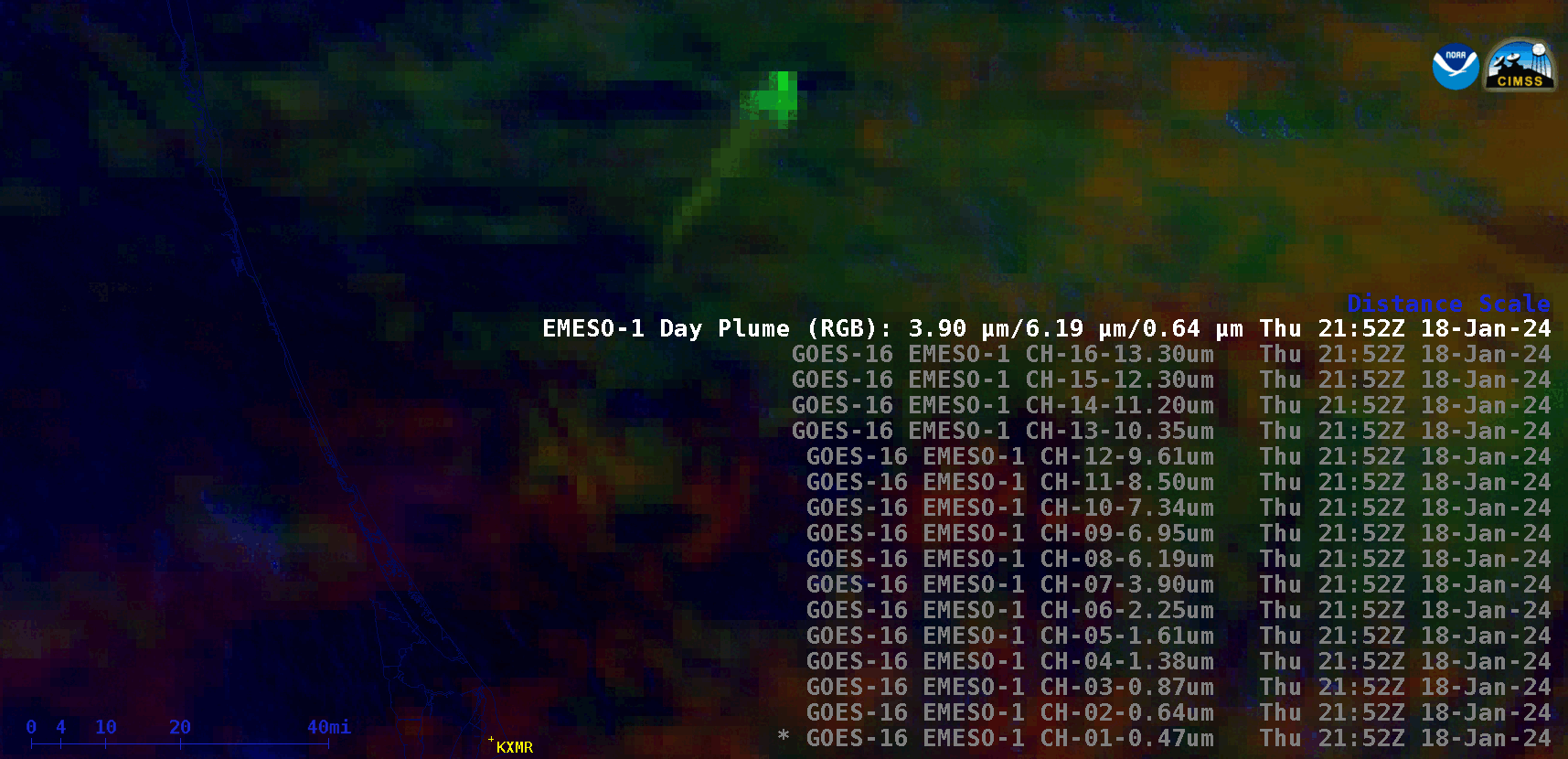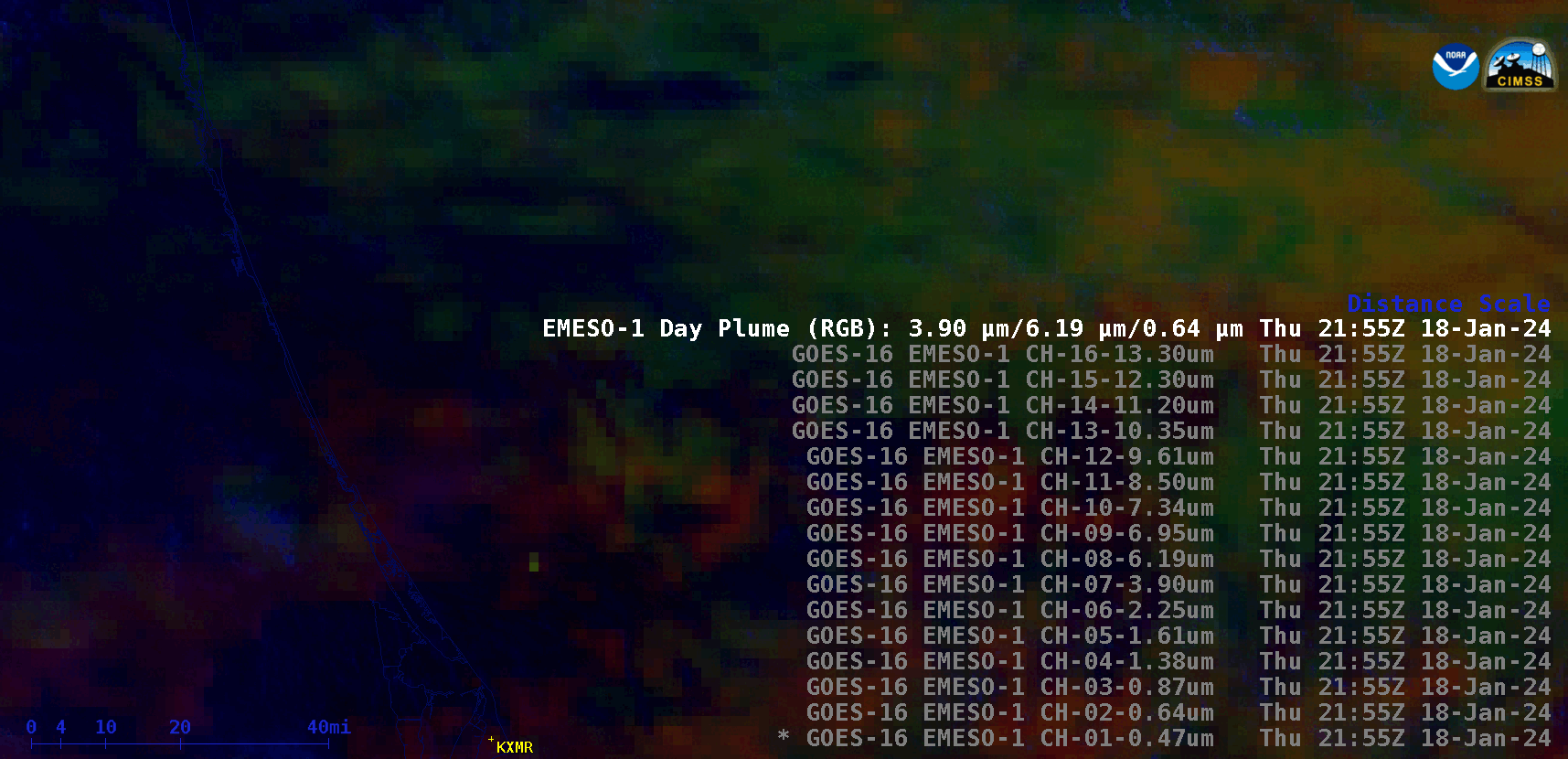Satellite signatures of the SpaceX / Axiom Mission 3 rocket launch

30-second GOES-16 images from all 16 ABI spectral bands, in addition to a Rocket Plume RGB; KXMR denotes the Cape Canaveral rawinsonde site [click to play animated GIF | MP4]
One noteworthy feature seen in GOES-16 Water Vapor and Rocket Plume RGB imagery was the subtle trail of hot water vapor in the wake of the departing Falcon 9 stage 1 rocket booster, which could be seen drifting to the north-northwest in 30-second images from 2152-2153 UTC (below).

30-second GOES-16 Rocket Plume RGB, Upper-level Water Vapor (6.2 µm) and Shortwave Infrared (3.9 µm) images, from 2152-2153 UTC [click to enlarge]

GOES-16 Rocket Plume RGB, Upper-level Water Vapor (6.2 µm), Mid-level Water Vapor (6.9 µm) and Shortwave Infrared (3.9 µm) images at 21:55:25 UTC [click to enlarge]

30-second GOES-16 “Red” Visible (0.64 µm) images [click to play animated GIF | MP4]

